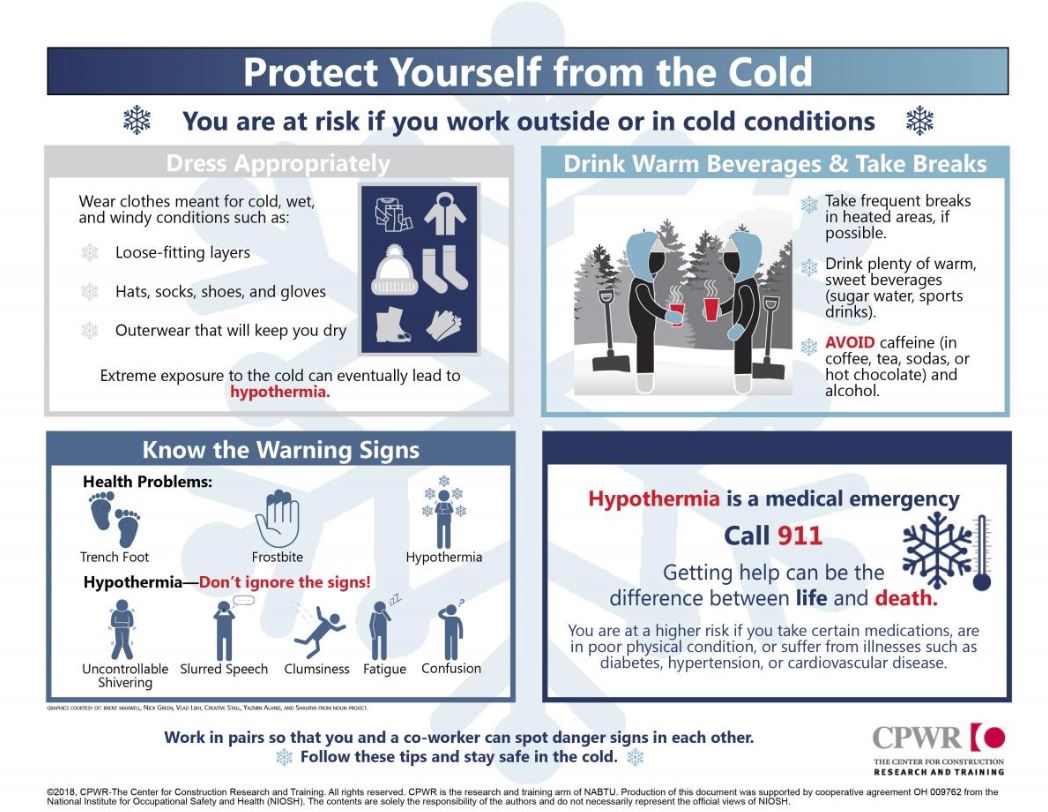How to protect construction workers from injuries related to cold weather?
 During the winter, New York construction workers face difficult conditions that put them at risk of specific injuries. Contractors are responsible for their workers safety and they should take extra precautions to protect them from cold related injuries.
During the winter, New York construction workers face difficult conditions that put them at risk of specific injuries. Contractors are responsible for their workers safety and they should take extra precautions to protect them from cold related injuries.
The Center for Construction Research and Training (CPWR) just released a serie of infographics in English and Spanish that can be used by contractors to make sure their employees are taking special precautions to protect themselves from winter injuries.
Workers should dress appropriately and contractors should make sure that they provide a heated area for their workers where they can take frequent breaks and drink plenty of warm and sweet beverages. Caffeine and of course alcohol should be avoided.
Employees should not work alone and should check on each other for signs of the following injuries:
Personal Injuries directly related to cold such as Hypothermia, Frostbite and Trench Foot
Hypothermia is a dangerous medical condition that can lead to death. It occurs when the body loses heat faster than it can produce heat. Construction workers who stay too long in the cold can suddenly experience a drop in their body temperature. If a worker has uncontrollable shivering, if he slurs his speech or acts clumsy, confused or tired he probably suffers from hypothermia. Call 911 then bring the worker indoors. If necessary start CPR while warming the person. Give the person warm fluids if conscious.
Frostbite occurs when the skin is exposed to extreme cold for too long and the skin and the tissue below the skin freeze. It usually affects fingers, toes and also the nose, the cheecks and the chin. Frostbite is a condition that should be taken seriously as severe cases can lead to amputation. Workers should check for signs of skin becoming very cold then numb, hard and pale. Mild cases can be treated with gradual warning but more severe cases require medical care.
Trench foot injuries occur when workers have their feet exposed to wet and cold for too long. The expression comes from the first World War when British and American soldiers suffered from this condition while waiting in wet and cold trenches. It is a non freezing cold injury. Even though workers may use waterproof shoes, their feet sweat and remain damp and they may suffer from trench foot injury as well. As the feet loose heat, the blood stops circulating proprely and the nerves, the skin and the muscles can suffer damage. Untreated trench foot injury can lead to gangrene and in the worst case require an amputation
 New York Personal Injury Attorneys Blog
New York Personal Injury Attorneys Blog


